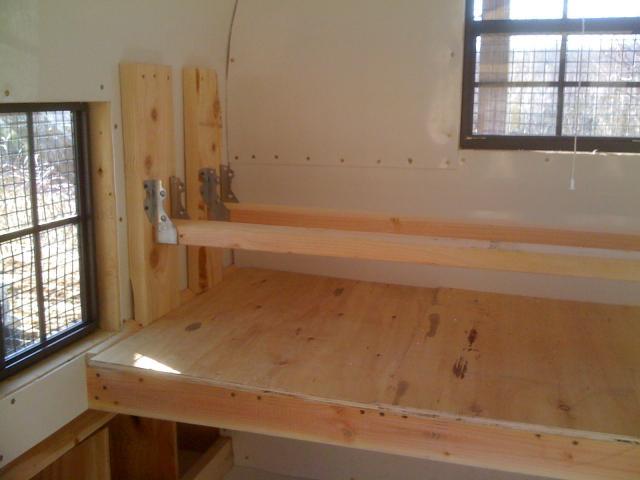This will be my first winter with chickens!
I took the advice of, I believe it was, PandaChicken, about getting the Min/Max thermometers........to help set my mind at ease!!
Just installed them today........one on the outside of my coop, and the other at roost level, inside the coop.
I have a 6' x 6' Amish-built coop, which has, I believe, plenty of ventilation......and which is moderately insulated
with sheet styrofoam, covered with "luann" type panels (for ease of cleaning!) on the walls.
I have only 8 chickens............and plan on providing no supplemental heat, unless it is absolutely frigid/below zero/etc.
I am hoping the moderate insulation/good ventilation, plus the heat the chickens produce themselves, will be sufficient to keep
the girls health, happy, and comfortable!!
Coop exterior.........

Coop interior, showing luann stuff over styrofoam.............

We're supposed to get a light frost tonight here in northwest New Jersey, and
I am anxious to check out the lowest recorded temps tomorrow..........both outside and inside where the chickies are!
I believe the results will make me feel better on those cold nights, when I'll be imagining how cold the girls might be .....only
to find the outside the coop/inside the coop temps to be much different!
Thanks for the great advice, PandaChicken!!
I can report the results now and then throughout the season, if anyone would be interested................as I know the comfort of our chickens is
a concern for many of us.
I took the advice of, I believe it was, PandaChicken, about getting the Min/Max thermometers........to help set my mind at ease!!
Just installed them today........one on the outside of my coop, and the other at roost level, inside the coop.
I have a 6' x 6' Amish-built coop, which has, I believe, plenty of ventilation......and which is moderately insulated
with sheet styrofoam, covered with "luann" type panels (for ease of cleaning!) on the walls.
I have only 8 chickens............and plan on providing no supplemental heat, unless it is absolutely frigid/below zero/etc.
I am hoping the moderate insulation/good ventilation, plus the heat the chickens produce themselves, will be sufficient to keep
the girls health, happy, and comfortable!!
Coop exterior.........

Coop interior, showing luann stuff over styrofoam.............

We're supposed to get a light frost tonight here in northwest New Jersey, and
I am anxious to check out the lowest recorded temps tomorrow..........both outside and inside where the chickies are!
I believe the results will make me feel better on those cold nights, when I'll be imagining how cold the girls might be .....only
to find the outside the coop/inside the coop temps to be much different!
Thanks for the great advice, PandaChicken!!
I can report the results now and then throughout the season, if anyone would be interested................as I know the comfort of our chickens is
a concern for many of us.



